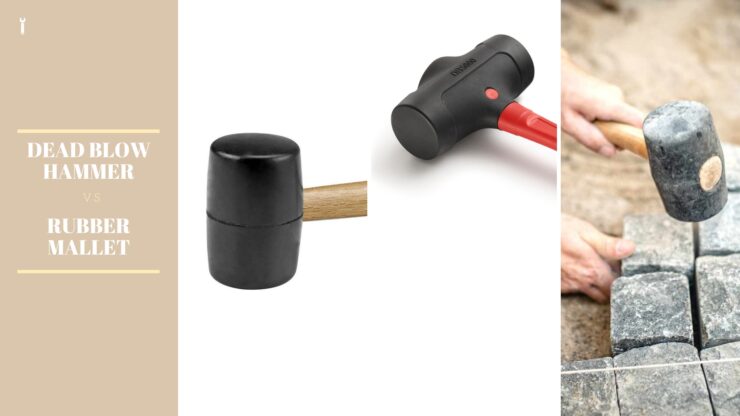Both dead blow hammers and rubber mallets can be used for different purposes, depending on the type of material you are working with. The primary difference between them is the fact that dead blow hammers are more suited for hard materials, while rubber mallets are better for softer ones.
So, which should you choose? Let’s take a closer look at the pros and cons of each to help you decide.
Definition of a Dead Blow Hammer
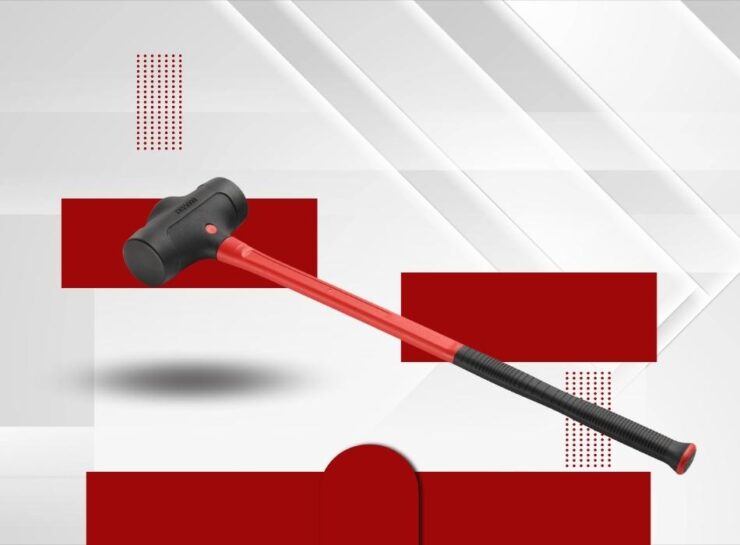
A dead blow hammer is a specialized tool designed to move, shape, or fix objects without causing excessive damage. It consists of a solid steel head filled with a shot–metal or ceramic material that absorbs the impact of the hammer during every strike of metal, wood, plastic, and other materials. This gives it the ability to apply more force than a traditional hammer while minimizing surface damage.
In contrast to a rubber mallet which is intended to distribute force over a larger area, the dead blow mechanism allows the user to direct all their energy into one single point. This makes it ideal for working with precision-sensitive parts such as automotive components, fragile ceramics, and small masonry pieces.
The dead blow hammer can also be used in combination with mallets and striking tools for light demolition work and for beating out slate roofs in construction projects.
Definition of a Rubber Mallet
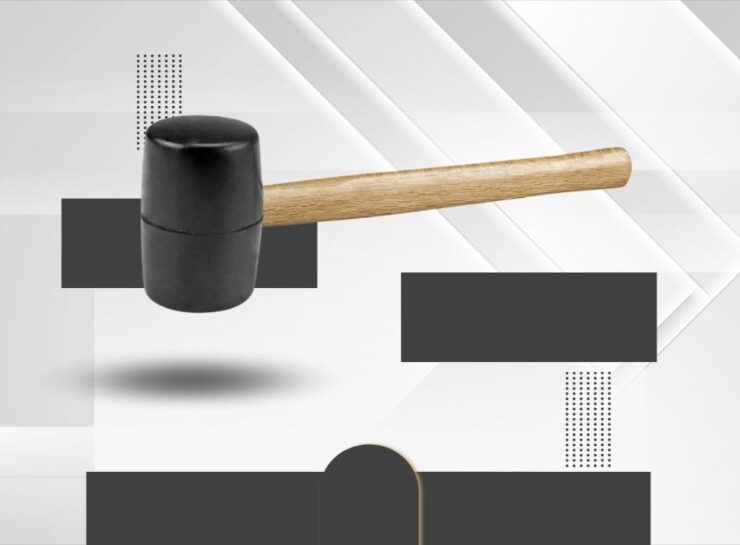
This is a tool consisting of a rubber head on one end of a handle and is used to strike another object without leaving marks. This makes it an optimal choice when you don’t want to leave any visible impressions or scratches on the object being struck; this includes tiles, finished wood, plastics, and other materials. They are also the preferred choice for making repairs or modifications to delicate items.
It does not generate much force so it should be avoided when more force is needed. Typical applications for rubber mallets include construction work, carpentry, automotive repairs, and other forms of repair work.
Design
When it comes to choosing between a dead blow hammer vs a rubber mallet, it’s important to consider the design of each tool. Both tools have their own advantages and disadvantages when it comes to design. Let’s explore them further.
Dead Blow hammers are constructed of a hard plastic head and have a hollow interior filled with steel shot. Steel shot is made of small, round pieces of hardened steel that remain in the head, shifting with each strike and providing resistance against recoil. The steel shot dispenses energy with every swing, helping to absorb impact and preventing tools or materials from being damaged.
This type of hammer is often used for applications like panel assembly and automotive bodywork. It produces less vibration than other types of hammers, making it easier to work with for extended periods of time without causing discomfort to the user. As the rounds shift within the hammer head-on impact, they are also known for their ability to reduce rebound from unexpected resistance caused by impacts like hitting nails buried at an angle.
A rubber mallet is a type of hammer with a head made from rubber, typically offering softer contact that minimizes damage to the striking surface. They are often used for pushing, shaping, and forming materials such as plastics, metals, and wood. They are usually available in two sizes – a flat-face version for working surfaces with low resilience and a larger version featuring an angled or beveled edge to serve areas with higher resilience.
The head is usually wider than the handle, which gives a better balance when holding while striking. The handle is generally made from either wood or plastic and may feature ergonomic grips or cushioning to provide improved comfort during long periods of use. The heads are usually capped with a black layer of neoprene which gives greater dampening qualities than alternative heads without it. Neoprene heads also allow greater protection against sparking when working with certain metals.
Uses
Both a dead blow hammer and a rubber mallet have their uses in a wide range of situations. From assembling furniture to any kind of precise work, both types of hammers can come in handy. Here we will discuss the uses of a dead blow hammer and a rubber mallet to help you decide which one you should use for your particular project.
Dead Blow Hammer Uses
Dead blow hammers (also known as “echo” hammers or shot-filled hammers) are suitable for a variety of jobs. This tool is essential in many industrial and automotive applications as they provide additional force while reducing the risk of harm to the workpiece. Dead blow hammers have a synthetic rubber or plastic head that is filled with a shot (usually steel). The striking surface often has ridges cut into it, providing increased dampening and improved grip when used on slippery surfaces.
Common uses for a dead blow hammer include:
- Driving pins, rivets, and chisels
- Easing fitting of cutting tools and parts onto machinery
- Tapering recessed sections on machinery components
- Lightening striking force on precision punches without marring the surface
- Adjustment of scale dimensions on calipers, bars, etc.
- Forming dents and shaping metal components
- Tempering heat treatment processes
Rubber Mallet Uses
A rubber mallet is a tool used to delicately tap an object and apply a small amount of force, instead of using more force with a hammer. The mallet is perfect for many kinds of craftsmanship, including jointing wood pieces together and chipping away at small amounts of stone and rock. Rubber mallets can even be used for decorative embossing – with patience and the right type of rubber material, the end result can look like pieces have been recently machine-pressed.
Rubber mallets are also commonly used by mechanics to assemble parts without causing any major damage or warping the object being worked on. Generally, they are made up of large rubber heads or caps that go over either wooden or plastic handles, which absorb shock when striking an object. This helps reduce damage to both the workpiece and the user’s hands as well as keeping noise levels relatively low if neighbors or other workers need to be considered.
In addition to carpentry, stone chipping, and mechanic applications, rubber mallets are even suitable for musical instrument repair! Drummers often use them to safely tighten lugs on drum cymbals so the sound is perfectly balanced when hitting them – soft enough to not overdo it with metal strain but hard enough for a firm grip on whichever surface it’s applied upon.
Pros and Cons
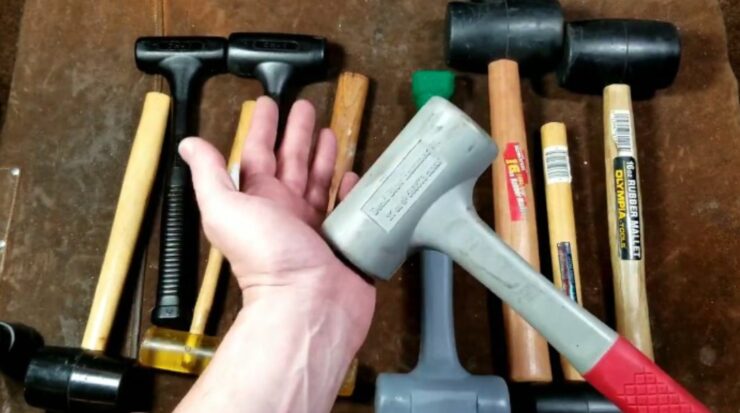
When it comes to hammers, there are a wide variety of shapes, sizes, and materials to choose from. Two common hammer types are the dead blow hammer and the rubber mallet. Both of these hammers offer different advantages and disadvantages, so let’s take a look at the pros and cons of each one to help you decide which one is right for your needs.
A dead blow hammer is an essential tool for anyone looking for an effective strike that won’t cause damage. This type of hammer consists of a steel head with either a wooden or rubber handle and contains a cavity filled with a non-metallic material. This filling absorbs the shock of the blow and helps to prevent rebound, making it a safer tool than most hammers. There are three primary benefits to using a dead blow hammer, as well as some potential drawbacks to consider.
Pros
- Resists rebounding: As the non-metallic cavity inside the head absorbs and dissipates shock, it reduces rebound and minimizes potential injury.
- Prevents marring: As no metal component strikes your workpiece directly, you don’t have to worry about cosmetic damage to soft materials like wood or aluminum panels.
- Breaks tougher bonds: The non-metallic filling in the head helps absorb momentum from each successive strike, so you can achieve stronger force in certain applications than with standard mallets.
Cons
- Limited striking power: Due to the reduced weight and momentum caused by the inner material filling, you do not get quite as much force when using a dead blow hammer as compared to other types of hammers and mallets.
- Expense: Deadblow hammers are typically more expensive than non-filled structural mallets due to their specialty manufacturing process and components used, so budget shoppers won’t find them budget-friendly.
A rubber mallet is a simple tool made of wood or plastic handles and a soft, rubber head. It is designed to soften the impact of hard objects, such as chisels and nails while spreading the impact forces out over a larger area. Although rubber mallets have been used for years in both home workshops and specialized industrial settings, you may be considering using one for your current project. Before you make your decision, here is a look at some pros and cons of using a rubber mallet instead of other tools such as dead blow hammers.
Pros:
- Rubber mallets transmit more energy than other types of hammers to drive objects into place without worrying about marks being left behind from steel hammers.
- A soft surface is better for delicate projects that cannot handle excessive force.
- The lack of weight with certain models makes them easier to hold at different angles allowing better control over your project.
Cons:
- Rubber mallets will not be able to produce significantly harder or faster strikes than their plastic or wooden counterparts meaning it can take longer to drive objects into place on tougher materials like wood or cement.
- Depending on the size they can be difficult to store due to their soft surface and shape which can get bent out of shape easily if placed together with sharp tools or exposed to extreme temperatures.
- The heads can also wear down quickly if constantly hitting harder surfaces so care must be taken when choosing what type of projects this tool should be used for.
FAQs
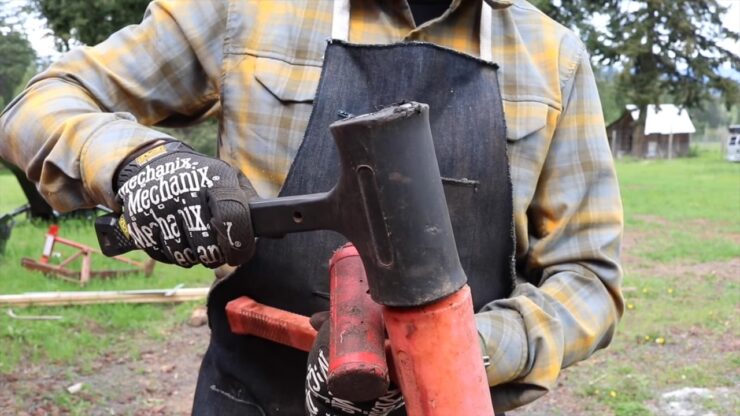
Are dead blow hammers more expensive than rubber mallets?
They are typically more expensive than rubber ones due to their heavier construction and specialized use.
Are dead blow hammers more durable than rubber mallets?
They are typically more durable than rubber mallets due to their heavier construction and ability to absorb shock and reduce vibration.
Can dead blow hammers be used with metal surfaces?
Yes, they can be used with metal surfaces, as long as they are designed for heavy-duty use.
Can rubber mallets be used on delicate surfaces?
Yes, they are safe to use on delicate surfaces because they are designed to be non-damaging.
Are dead blow hammers better for automotive work?
Yes, they are often preferred for automotive work due to their ability to reduce shock and vibration.
Can rubber mallets be used in woodworking?
Yes, they are often used in woodworking for tasks such as tapping wooden dowels into place.
Can dead blow hammers be used for precision work?
Yes, they can be used for precision work because they have a softer head that reduces the risk of damage to delicate surfaces.
Are dead blow hammers and rubber mallets interchangeable?
No, they are not interchangeable because they are designed for different tasks and have different construction.
Conclusion
In conclusion, it is important to select the right tool for the job when deciding between a dead blow hammer and a rubber mallet. The dead blow hammer is an excellent choice for applications that involve delicate assembly tasks, where a more powerful blow may be causing damage to fragile parts or working surfaces. It allows you to control the force of impact while reducing rebound and improving accuracy in tight spaces.
A rubber mallet, on the other hand, is well-suited to repetitive striking operations that involve larger objects, such as chiseling stone or shaping metal. Its heavier weight produces more impressive results but can also cause unintentional damage due to its powerful nature.
Consider both tools before making your purchase decision so you can maximize your opportunities for success in various applications.
